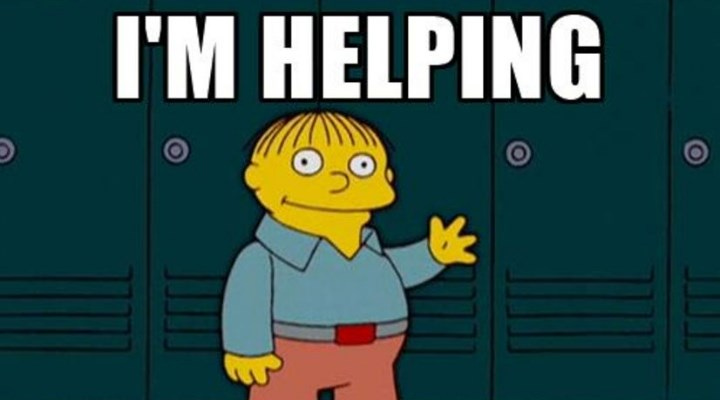Perpetuating the Cycle of Global Dependence
Self satisfaction of "helping" has a cost - in both financial and human terms.
The narrative surrounding U.S. aid cuts often follows a predictable pattern in media coverage: "The incident of X (a negative event) is rising due to evil Trumpy Magats cutting off USAID funding for Y (some allegedly causal factor - or the prevention of such)." This framing paints the United States as the indispensable savior of struggling nations, while simultaneously blaming domestic political decisions for global woes. However, this perspective oversimplifies complex issues and ignores the deeper, systemic problems that foreign aid often fails to address. By focusing on aid as a cure-all, we risk perpetuating dependency and masking root causes, leaving nations trapped in cycles of dysfunction.
The U.S. taxpayer has long been positioned as a global safety net, funding programs that provide prophylaxis or therapeutic solutions to crises in developing nations. These interventions, whether food aid, healthcare, or contraceptives, often serve as temporary relief, addressing symptoms rather than underlying issues. When aid is cut, the media points to rising problems as evidence of failure, but this ignores a critical truth: if the problem worsens without aid, it suggests the root cause was never tackled. Aid, in many cases, acts as a Band-Aid, enabling populations and governments to sidestep the structural or behavioral changes needed for self-sufficiency.
Consider the HIV/AIDS epidemic (or the Monkey Pox scare) as an example. Early in the crisis, it became clear that HIV spread primarily through unprotected sex with infected partners, particularly in high-risk communities. The straightforward solution—reducing unprotected sex with infected individuals—was overshadowed by demands for pharmaceutical interventions. Rather than emphasizing behavioral change, the narrative shifted to blaming figures like Reagan for not accelerating the development of preventative or curative drugs. This allowed risky behaviors to persist under the assumption that a pill or treatment would mitigate the consequences. The result? A prolonged epidemic that could have been curbed more effectively through education and personal responsibility.
A similar dynamic is evident in the Democratic Republic of Congo, where the AIDS epidemic is tied not to a lack of treatment but to an explosion of sexual violence. The availability of treatments, while life-saving for some, may inadvertently contribute to the problem by reducing the perceived risk of rape, thus failing to address the root cause: a culture of violence and impunity. Providing drugs without tackling the societal drivers of rape is like mopping the floor during a rainstorm with a leaking roof—it’s a temporary fix that ignores the structural failure.
In Liberia, recent reports highlight USAID cuts as a potential driver of increased unwanted pregnancies. Unlike diseases, pregnancy is a predictable biological outcome of a specific act. Barring widespread sexual violence, as seen in the Congo, preventing pregnancy requires no advanced technology—just the decision to abstain or use locally available contraception. Yet, the narrative frames U.S. aid as the critical factor, ignoring Liberia’s agency to address its own reproductive health challenges. This dependency on external funding for condoms or contraceptives underscores a broader issue: aid often fosters reliance rather than resilience.
Food aid presents another case study. While it alleviates immediate hunger, it rarely incentivizes local agricultural development. Instead, it can undermine local markets, making recipient nations dependent on foreign generosity. Similarly, healthcare aid mitigates acute suffering but does little to reform broken systems or change behaviors that perpetuate disease. By focusing on short-term relief, aid programs often delay the inevitable reckoning with deeper issues—corrupt governance, cultural practices, or economic mismanagement—that sustain these crises.
It seems to me the pattern is clear: U.S. aid, while well-intentioned, frequently enables arrested development. Setting aside the waste and fraud that allows over 80% of the funds to be soaked up by organizations before it even gets to the target, it allows recipient nations to postpone addressing root causes (or avoid addressing them entirely), creating a cycle of dependency that collapses when funding is reduced. It also allows recipient governments to ignore issues that are being mitigated with outside funding and use funds and resources that should be directed toward those crises for other chosen imperatives – not all of them good for the people of that nation.
The media’s hysteria over aid cuts distracts from this reality, framing the U.S. as both the problem and the solution. True progress requires shifting the focus from external aid to internal reform, encouraging nations to take ownership of their challenges rather than relying on the American taxpayer as a perpetual crutch. Only then can we move beyond symptom management to meaningful, lasting solutions.
The first objective of any aid is to eliminate the need for it.





I thought about this after seeing the reports of DHS revoking "temporary" protected status of Hondurans who had been designated as such for 25 years - and noticing that the media unironically used the words "temporary" and "25 years" in the same sentence.
Politico had a post on X last month about Africa having a food shortage due to USAID cuts. It managed 258 likes, while my simple response, "Why doesn't Africa grow its own food?" garnered 1.1K likes. It seems many of us are sensible people.